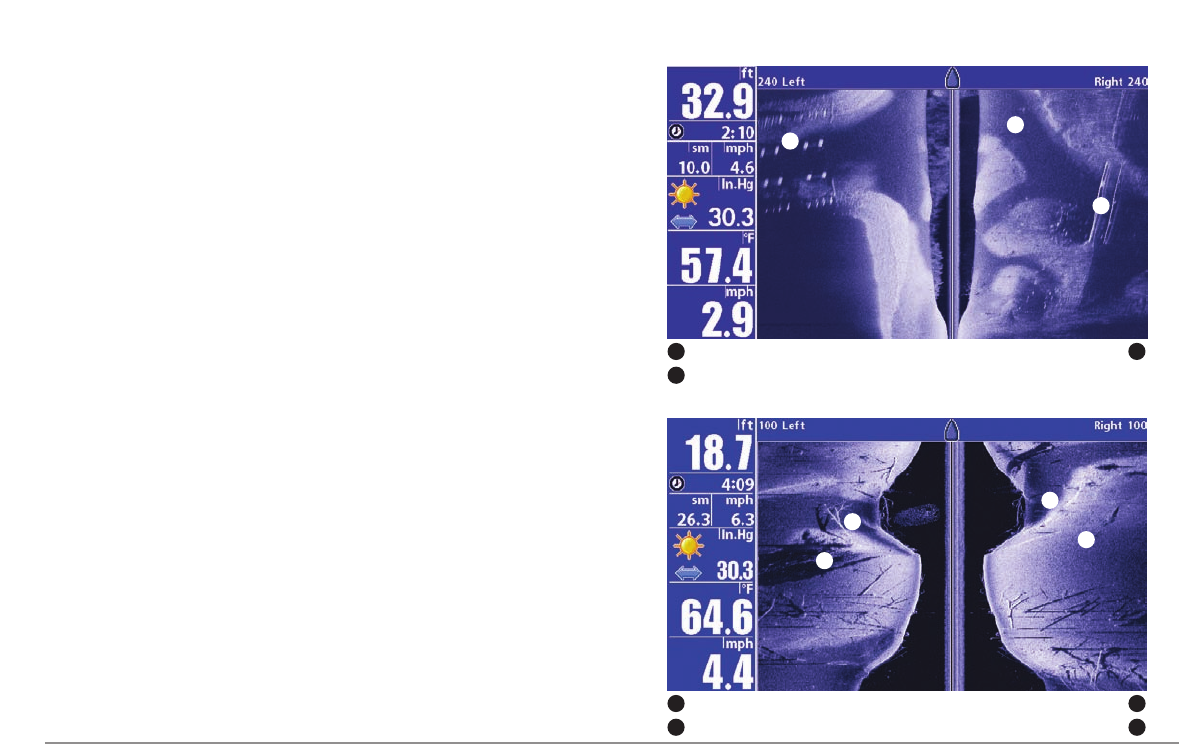
Boat navigation: It is important to understand that when the boat turns,
successive beam strips to one side will begin to overlap and the strips on the
other side will fan out, providing some distortion to the image. Because of
this, the best imaging performance is produced by straight line navigation
and minimal side-to-side boat motion (i.e. wave induced, etc.) This applies to
navigation by either the main engine or the trolling motor. Minimize turning
time and avoid wave action that induces large side-to-side rocking of the
boat. For example, if there is a lot of wave activity, try to move the boat so
that it is perpendicular to the waves instead of parallel with the waves in
order to minimize the side-to-side rocking of the boat.
Beam Coverage: When there is an area directly under the boat that does not
have SI beam coverage, this area will be covered by the standard 200/83 kHz
down-looking beam and displayed in the Sonar views. The net effect of this,
on the display, is that a single object may appear as two separate entities
when in reality, it is one continuous object. See Submerged Bridge: A
Closer Perspective and the Submerged Bridge graphics on the next page
for examples of this.
Submerged Ravine with Timber
Possible drop off
1
Submerged timber
2
1
Submerged tree
3
Submerged ravine
4
2
3
4
Submerged Bridge, Creek Channel and New Bridge Piling
New bridge pilings
1
Creek channel
2
1
Submerged bridge
3
2
3
32


















